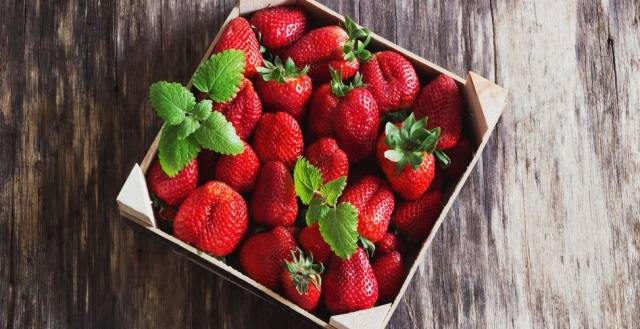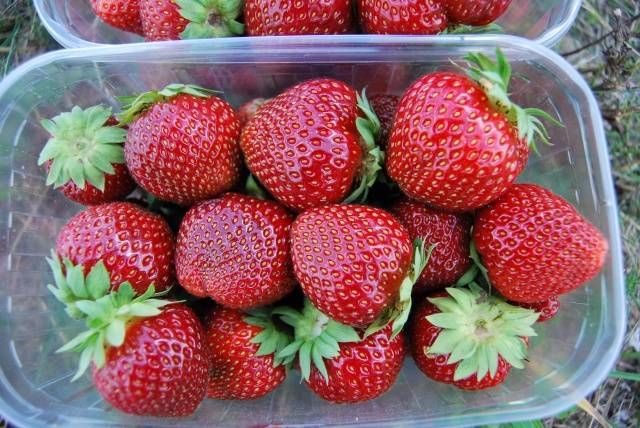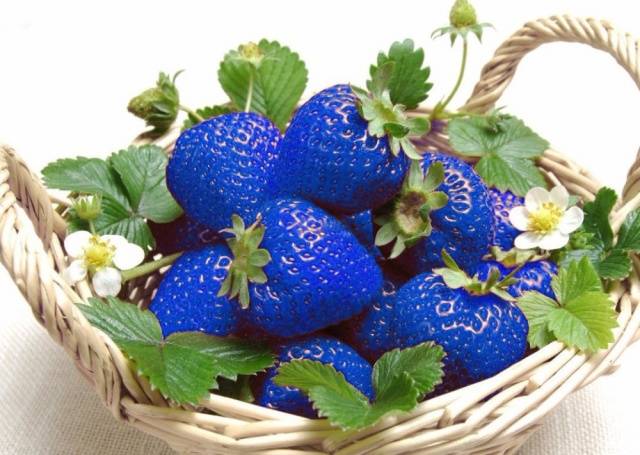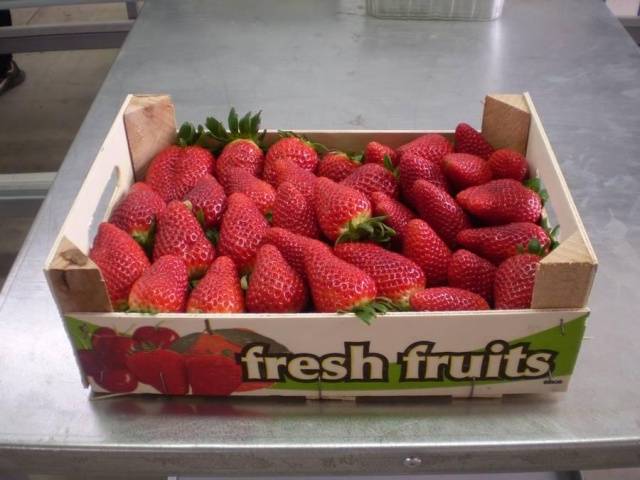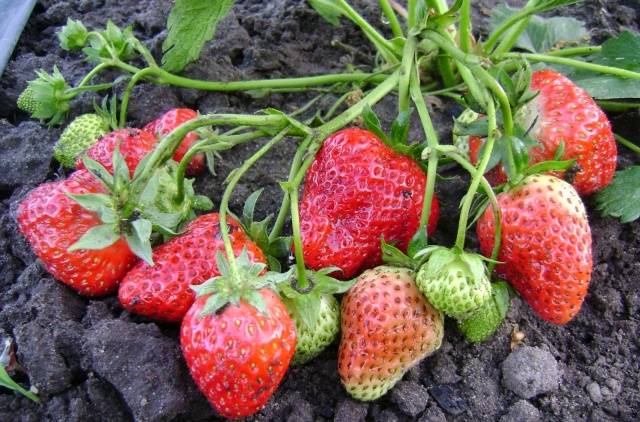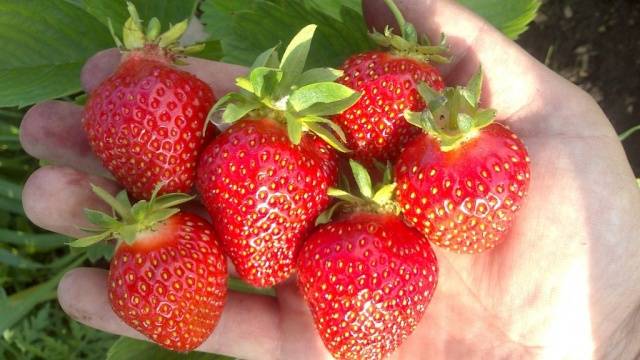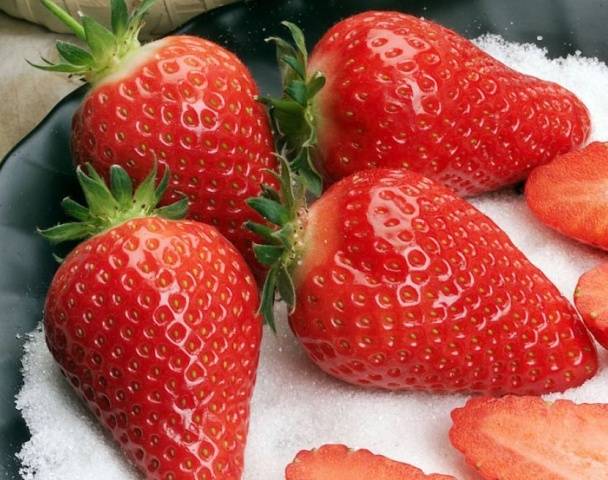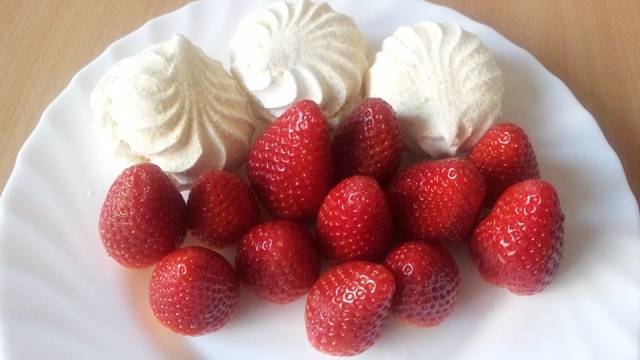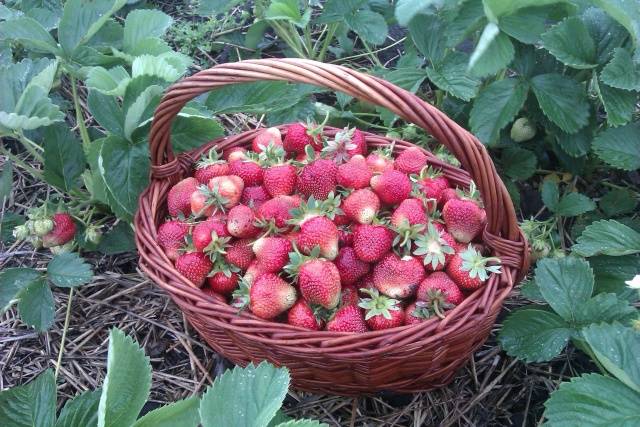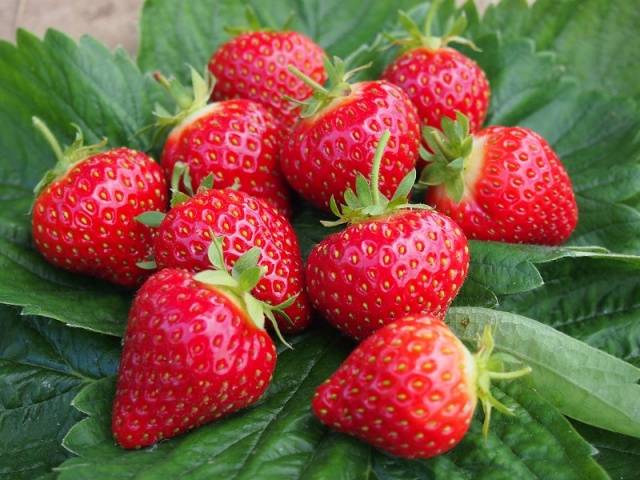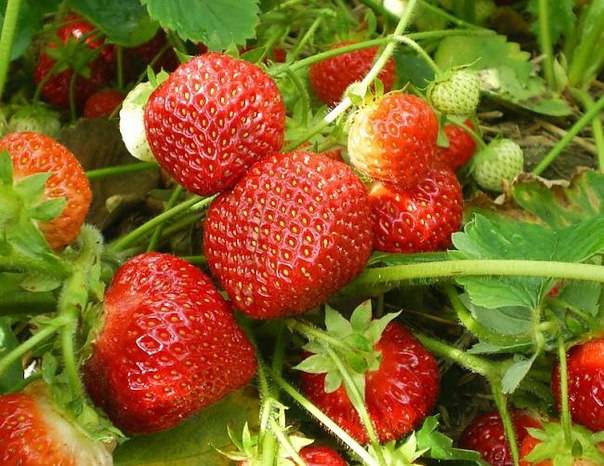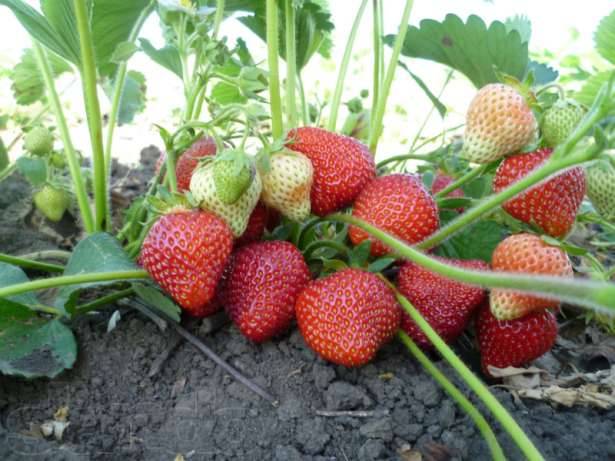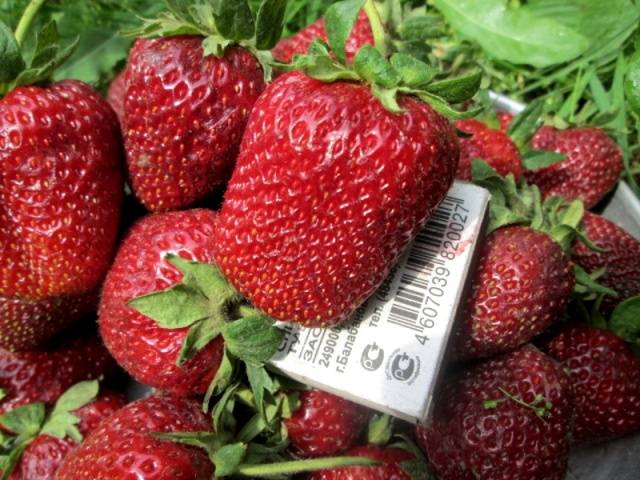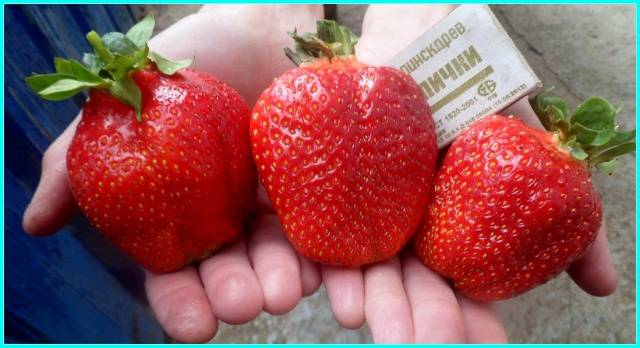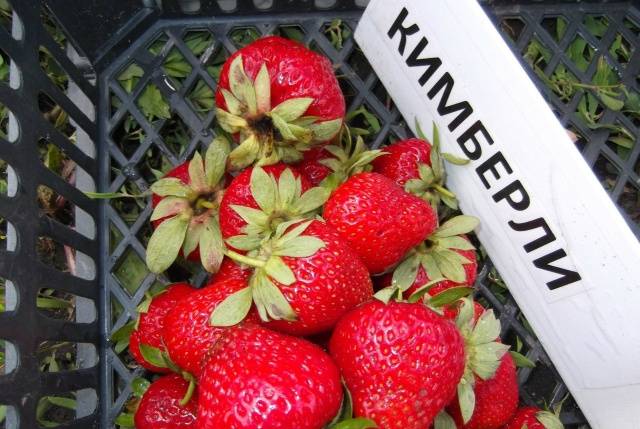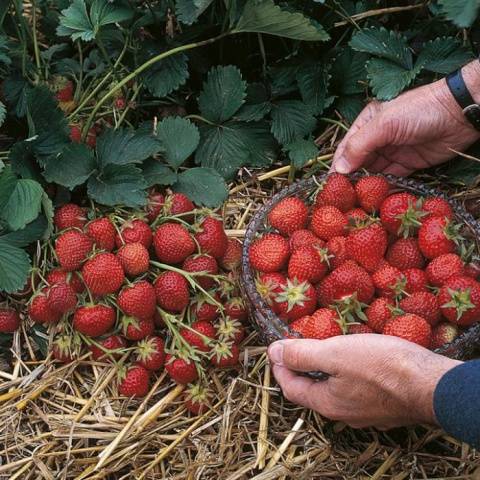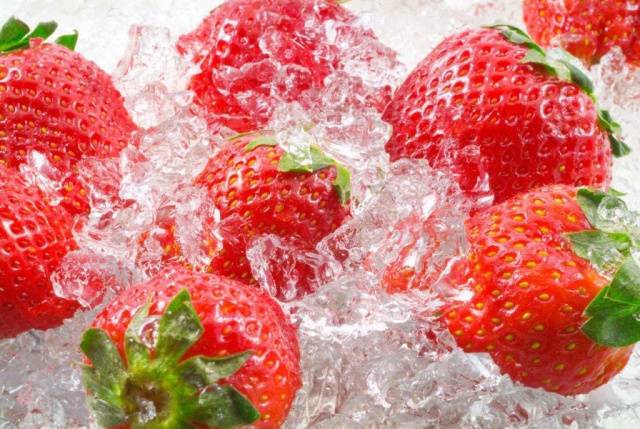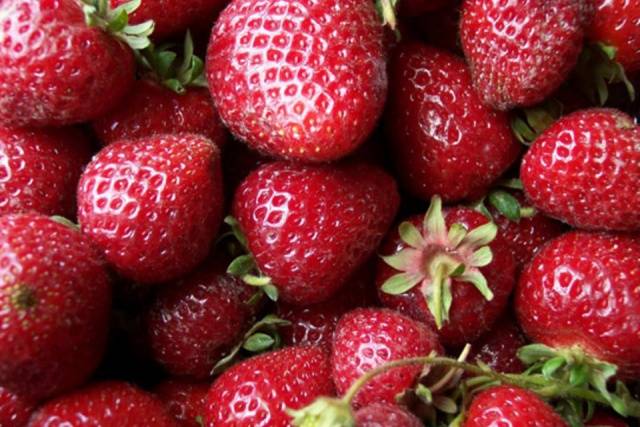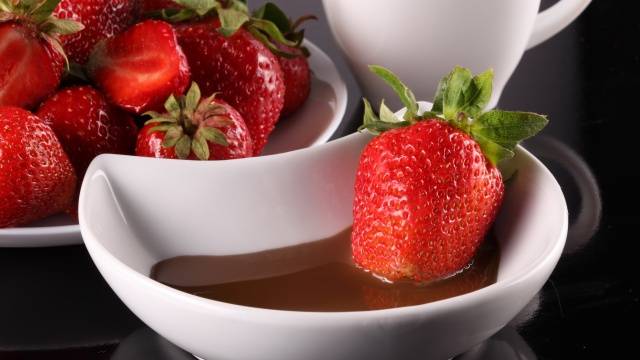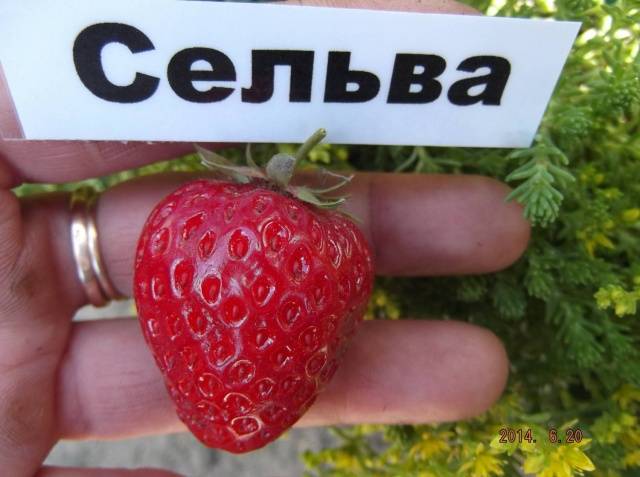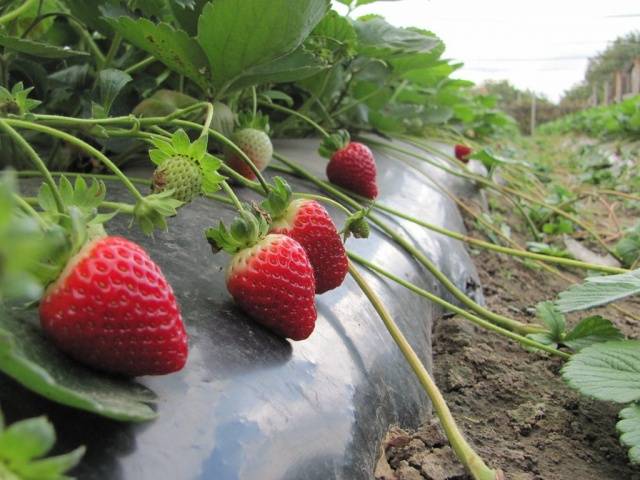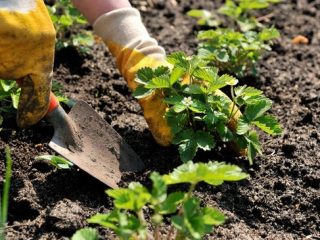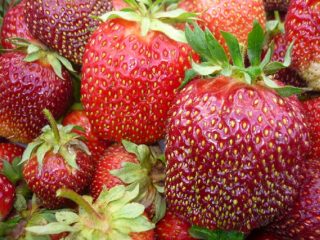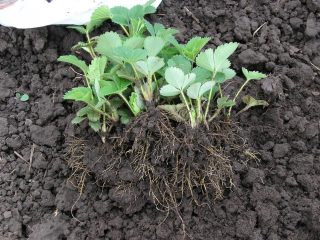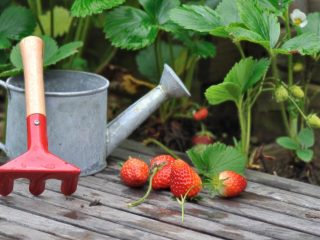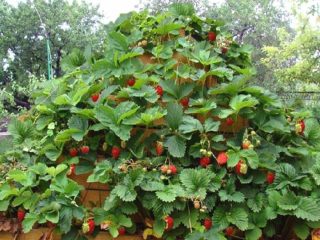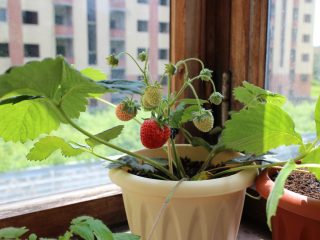Content
Dessert strawberries can only be compared in popularity to garden strawberries. Strawberries are good not only in appearance, the berry has an excellent taste, a very appetizing aroma, and also contains a lot of useful substances: vitamins C and B, folic acid, pectins, carotene. But harmful components, such as sugar and cholesterol, are not contained in strawberries at all, so almost everyone can eat the berry (the only exceptions are small children and allergy sufferers).
It is not surprising that summer residents are keenly interested strawberry varieties and are often grown sweet berries on their plots, because this is the only way to be one hundred percent sure of the quality of the product. To help gardeners here are the best varieties of strawberries for 2018 with photos and descriptions, characteristics and features.
Dividing varieties into groups
Like all fruit crops, strawberries have many varieties. Before choosing a specific strawberry variety, you should decide which group the crop should belong to.
A garden berries are divided into many groups, the main criteria are as follows:
- ripening speed (early ripening varieties, mid-ripening and late strawberries);
- type of pollination (self-pollinating varieties, strawberries that need pollinating insects);
- method of fruiting (ripening one crop per season or remontant varieties that bear fruit all summer);
- productivity (a variety that allows you to harvest two kilograms of berries from one bush can be called high-yielding);
- berry sizes (large-fruited strawberry, as a rule, is also the most productive, because each berry weighs from 40 grams);
- method of cultivation (strawberry varieties for open ground and strawberry varieties for greenhouses are complemented by an indoor variety of berries, which can be grown directly in the house or on the balcony);
- the latest varieties and time-tested ones.
The list of the best strawberry varieties in this article will be compiled based on reviews from experienced gardeners, as well as taking into account their requirements. As a rule, the owner of the garden needs the berries to be the most delicious, dense, beautiful, so that the variety is productive and can withstand the vagaries of the weather.
The best varieties of early strawberries
New varieties of strawberries often differ precisely in the speed of ripening - early ripening varieties are increasingly common among new selection products. This is not surprising, because Such strawberries will ripen by the end of spring; they are usually grown in greenhouses and greenhouses and used for sale.
The peculiarity of early varieties is that the first berries are not usually used for processing or preservation - the fruits are good only for fresh consumption. Strawberries often have a dense consistency, so they tolerate transportation well and retain their presentation for a long time.
Rarely do only early strawberries grow in a summer cottage; plantings are often interspersed with later varieties. Thus, the gardener will be able to enjoy the taste of the first berries already in May and extend this pleasure until August (by planting late-ripening varieties).
"Clery"
The best variety of early ripening berries, which has virtually no flaws. “Clery” was first grown by the Italians, but the variety quickly spread throughout the world. The main advantages of strawberries are the beauty of the berries and their very sweet taste.
The fruits are slightly elongated, with a sharp tip. The flesh of the berry is pink and the peel is bright red. Strawberries of this variety do not have a strong aroma, but the smell of the berries is gentle and very pleasant.
The bushes of the variety are small, compact, spherical in shape. Strawberries form many tendrils, so rooting them is the most popular way to propagate the crop.
It is better to plant “Clery” in the ground in September, so that the bushes have time to acclimatize and bear their first fruits in the spring. Caring for the crop is very simple, so it is great for novice gardeners and those who rarely visit their dacha.
"Alba"
This strawberry also comes from Italy, the variety is considered elite.In Russia, Alba is loved for its excellent taste and beautiful large berries, weighing up to 50 grams.
You can even recognize the variety by the taste of the berries; it is very characteristic – sweet and sour. The fruits are elongated, bright red. Even by the end of the season, the strawberries do not become smaller; the weight of the fruit is approximately the same throughout the growing season.
Alba has many advantages:
- frost-resistant;
- tolerates drought well;
- high-yielding;
- resistant to pests and viruses;
- tolerates transportation well and is suitable for storage.
Thanks to these qualities, the variety can be grown commercially. All Alba needs to ripen is abundant and regular watering.
"Zephyr"
You can recognize Danish selection strawberries by the appearance of the berries: they are round, with clearly visible ribs and a perfectly smooth surface. The variety is considered productive, since a gardener can get up to a kilogram of fruit from each bush.
Strawberries have a rich taste and aroma; they are often used for sale and tolerate transportation and storage well.
“Zephyr” begins to bear fruit in the first year after planting, strawberries ripen very early. If you need to speed up the growing season even more, it is recommended to grow the variety in greenhouses and use artificial supplementary lighting of the bushes.
The variety tolerates drought, rarely gets sick, and is not subject to massive pest attacks.
"Honey"
The list of the best strawberry varieties will be incomplete if it does not contain this name. “Honey” is very often grown in Russian gardens, because this strawberry has a lot of advantages:
- a highly developed root system, allowing seedlings to quickly adapt and be saturated with nutrients from the deep layers of the soil;
- large mass of berries;
- early fruiting (fruit ovaries are formed already in April);
- excellent taste characteristics (stava contains antioxidants, vitamins and even iodine).
Strawberries bloom for about two weeks, the first berries can be picked already in mid-May, and the ripening time does not even depend on the region and weather. The variety bears fruit once a year. By the end of the growing season, the strawberries become smaller, but sweeter.
Mid-season garden strawberries
Strawberries with medium ripening periods are rightfully considered the most common in Russia, because these varieties are universal. The fruits are very tasty fresh, since the plants have enough summer sun, such strawberries can be canned, they are dense and juicy at the same time.
But mid-season strawberries will be an excellent solution, a summer resident from Siberia may well limit itself to only this variety of berry (by giving fruit in mid-summer, the plants will be protected from spring and autumn cold).
"Festival"
This strawberry is known for its ability to withstand periods of drought and intense heat. The variety is considered one of the most popular in Russia also because of its unpretentiousness.
Strawberries are bright red, round, with a shiny surface and pink flesh. The berries taste sweet with moderate sourness, which is considered the standard of strawberry taste.
The bushes of this variety are quite tall, but not very branched. It is recommended to plant “Festivalnaya” in the spring, when the first warmth arrives.
“Festivalnaya” is most suitable for the climatic conditions of the middle zone, as it tolerates cold and high humidity well. The crop produces stable and high yields, and rarely gets sick.
"Darselect"
This strawberry is one of the most popular among mid-season varieties. A characteristic feature of the variety is its strawberry aroma. The berries are large, fleshy, and sour.
The shape of the fruit is cone-shaped, the tip is slightly blunt. Strawberries weigh about 25-30 grams.
In closed ground, "Darselect" ripens in mid-May, while in garden beds the berries will ripen only by mid-June. The bushes are tall, the strawberry leaves are dark green. A lot of tendrils appear on the bushes, but this does not lead to thickening of the plantings; it is not necessary to remove the shoots.
The first wave of the harvest is distinguished by slightly elongated berries, and the last strawberries are more rounded and even. The pulp of the fruit is elastic, moderately juicy, pink. Sweetness and sourness are perfectly balanced in the taste of the berries.
"Marshal"
One of the large-fruited varieties with medium ripening periods. Growing such strawberries is economically profitable, because due to the size of the berries, you can harvest a decent harvest from a small plot.
The average fruit weight is 90 grams, but with proper care and adequate nutrition, the berries can reach 100 grams. The fruits ripen in the first half of June. The variety is not afraid of frost, so it can be successfully cultivated in cold regions of the country.
It is better to plant Marshall strawberries in July, so that before winter the bushes have time to take root and fruit buds are formed in the axils of the leaves.
"Asia"
Strawberries with an unconventional flavor and large, beautiful fruits. The berries taste a little tart, sweetish with sourness.The aroma of strawberries is pronounced, strawberry.
The fruits have the same shape and size, are colored in a carmine shade, and are elongated in the shape of a cone. The density of the berries allows them to be transported even over long distances. The purpose of the fruit is universal: strawberries can be eaten fresh, canned, or frozen. It is better to grow berries under cover, since the variety is quite capricious in terms of temperature. The bushes are large with massive and dense leaves, thick peduncles, and a small number of tendrils.
“Asia” has earned its fame due to its exotic taste and marketable appearance.
"Kimberly"
The Dutch variety is popular not only among novice gardeners; even professional farmers appreciate this strawberry. Due to the high content of various sugars, the fruits have an unusual caramel flavor.
The berries are large, shiny, slightly elongated. Strawberries are easily transported and have dense pulp. The bushes are low, but powerful. There are few leaves on the plant, the fruits are located closer to the ground. During the season, several tendrils appear on the bushes; to maintain productivity, these shoots must be removed.
You can plant "Kimberly" both in spring and autumn - in any case, this should be done as early as possible. The variety loves moisture, so the bushes should be watered frequently and abundantly. But for the winter, it is better to cover the bushes with spruce branches or hay to prevent the crop from freezing.
Review of strawberries "Kimberly"
"Elsanta"
A classic variety bred in Holland by crossing two elite species (“Holiday” and “Gorella”). The appearance of the berries is very attractive, they are shiny, smooth and even. The shape of the strawberries resembles a cone, their color is bright red, the flesh is dense, and the taste is excellent.
The culture loves moisture very much, so it will have to be watered frequently and abundantly. But the gardener will receive a high harvest - up to 1.5 kg of fresh berries from each bush. You just need to monitor the roots of the plants and provide them with good ventilation (loosen the soil between the rows) so that the roots do not rot.
In general, “Elsanta” is unpretentious: it is not afraid of frost, is not susceptible to fungal infections, and does not need frequent fertilization. The variety is most suitable for growing in film tunnels.
Late ripening varieties
This group of strawberry varieties has such advantages as durability, rich taste and aroma of the fruit, and unpretentiousness. Late-ripening strawberries are grown mainly in ordinary beds, since flower stalks appear on the bushes after spring frosts.
Most often, late harvest is used for processing: canning, making juices, compotes and jam. You can successfully freeze the berries to preserve the taste of summer until the next season.
"Lord"
Breeders from England were involved in breeding these strawberries; their primary goal was high yield. And scientists have coped with this - “Lord” is considered one of the most productive varieties of late growing season.
Each bush can produce up to three kilograms of berries, so the English variety is often grown by fruit merchants. The berries tolerate transportation well and are not afraid of the cold.
The bushes grow up to 50 cm, which allows the fruits to ripen in weight without touching the ground. This protects the strawberries from rotting and being eaten by insects. The strawberries are red, elongated, beautiful and very tasty.
"Zenga-Zengana"
This species belongs to the varieties of German selection. The peculiarity of the crop is that its inflorescences are unisexual, so to pollinate the flowers you will have to plant strawberries mixed with another species, otherwise there will be no harvest.
But the variety has a lot of advantages: compact bushes, a small number of tendrils, large berries (up to 40 grams).
It is characteristic that the fruits of this variety are not the same: they can have either a round or elongated shape, be smooth or have ribs. The berries ripen late, have a sweet taste and strong aroma, and are colored a rich cherry color.
The variety is very productive - up to two kilograms of fruits are collected from the bush. Often these strawberries are grown for sale, because they are well stored and transported.
Remontant varieties of strawberries
The best varieties of strawberries of the new generation are remontant ones. Such crops are capable of bearing fruit more than once per season, and some can continue bearing fruit without interruption throughout the summer.
These strawberries are loved for their high yields, unpretentiousness, and most importantly, because with remontant varieties you don’t have to plant varieties with different ripening periods, because there will always be fresh berries on the bushes.
Reviews from the country's gardeners indicate that most of them either completely switched to remontant varieties or added them to their strawberry collection.
"Selva"
The variety was obtained by crossing three strawberry species; the remontant crop absorbed the best qualities of each of them. The advantages of this variety are as follows:
- unpretentiousness;
- cold resistance;
- immunity against diseases;
- high yield.
The first berries appear earlier than the fruits of the earliest ripening varieties, but these strawberries do not have a very pronounced taste or aroma, and their pulp is similar in density to an apple. But the second harvest is more tasty and plentiful, full of strawberry aroma.
"Mara de Bois"
To breed this species, scientists used genetic material from alpine strawberries, which explains the amazing aroma and sweet and sour taste of this strawberry.
Strawberries need sunlight to grow, but otherwise they are quite unpretentious. The fruits ripen throughout the season - from May to September, which suggests an unprecedented yield of the species.
The berries are beautiful and tasty, but they cannot be stored - after three days the strawberries crumple and release juice. Because of this, the variety is not used for growing for sale; it is better for them to feast on in their own garden.
Conclusion
The names of the best varieties of strawberries with photographs and a brief description should help the gardener decide - from this variety it is easy to choose something suitable for any growing conditions.
We can only advise that it is better to combine plantings, supplementing early varieties with late ones, or planting remontant strawberries together with mid-season ones. This approach will provide the gardener with fresh berries at any time of the season, and the harvest will be significantly higher.
